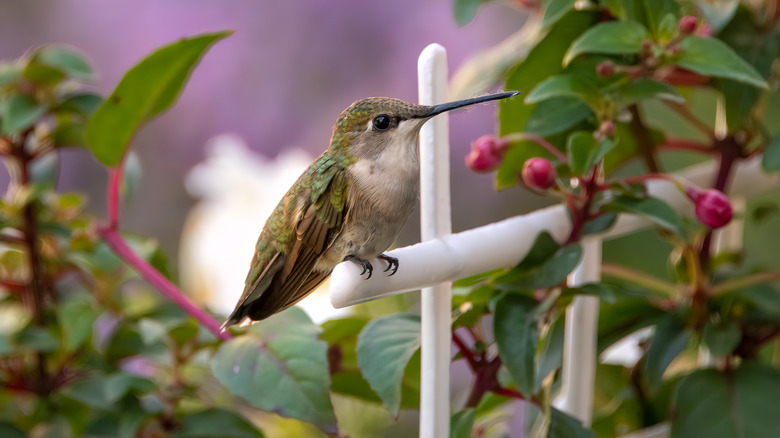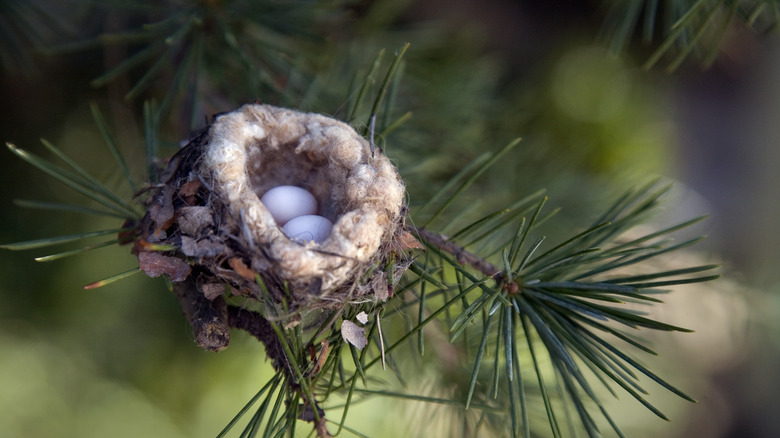Building A Hummingbird Nest Box? Avoid These Mistakes
We may receive a commission on purchases made from links.
Whether you're an avid birdwatcher or active gardener, sometimes you can't help but marvel at hummingbirds. These tiny, colorful birds move incredibly fast, visiting hundreds of flowers each day. They're also known to have quite the sweet tooth, consuming up to half their weight of nectar on a daily basis. This actually works in your favor (and for the ecosystem) since hummingbirds help pollinate flowers and spread seeds. Unfortunately, some species of hummingbirds are endangered and in need of protective habitats. So, if you see these little visitors in your garden (and want to help them), you can build a hummingbird nest box to attract them.
That said, hummingbirds are very particular about their nests. For example, they typically use natural materials that can expand, like plant fibers and spider silk, to support their growing hatchlings. Restricted spaces "cramp their style," so they'll most likely avoid a charming DIY birdhouse. Another deterrent is not planting enough flowers with nectar. Hummingbirds have remarkable memories for their food sources, tending to nest near their feeding areas. Now that you know the top two mistakes to avoid when building a hummingbird nest box, here are other tips to keep in mind.
Size, shape, and location matter for your hummingbird nest box
Hummingbirds are the smallest bird species on the planet, so understandably, their nests need to be small too. Hummingbird nests are just over 1 inch in diameter, and unlike "cavity" birds that nest in tree holes (and the standard birdhouses that replicate them), hummingbirds build their nests in a deep "cup" shape, sticking them high up in the fork of a tall shrub or tree. After molding a handmade nest in this shape, you'll need to place it in a sheltered area like this, at least 10 feet from the ground, to create a safe distance from predators.
Keeping all of the above in mind, it can be a bit challenging to build a hummingbird nest yourself. To avoid any mistakes in the process, an easier alternative is to leave out the materials they'll use to make one. There are nest material holders, like the Winemana Nest Holders, that you can mount to a tree in your yard for hummingbirds to visit. Remember that hummingbirds like using soft and spongy plant fibers, so look for fluffy natural materials to leave in your nest holder, like wooly or fuzzy foliage and cotton. (Never use dryer lint for birds since synthetic materials can be harmful for them if accidentally ingested.) If you don't have a garden or many nectar-filled flowers, there are creative DIY alternatives — like homemade hummingbird nectar – you can use to make your garden an attractive food source instead.

